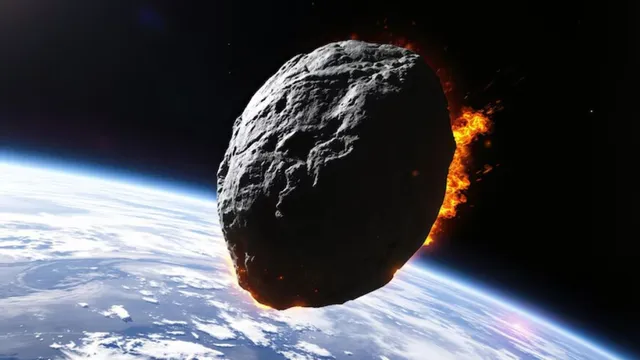- By Supratik Das
- Sun, 27 Jul 2025 12:45 PM (IST)
- Source:JND
A huge asteroid, known as 2025 OW, is going to pass safely close to Earth on July 28, 2025, according to NASA. Estimated to measure around 210 feet in width, the size of an average-sized commercial aircraft, the asteroid will pass at a speed of 46,908 miles per hour. It will reach its closest point at a distance of nearly 393,000 miles (633,000 km) from Earth—approximately 1.6 times more distant than the Moon. Even though the cosmic proximity is close, NASA's Jet Propulsion Laboratory (JPL) and the Center for Near-Earth Object Studies (CNEOS) have confirmed that the asteroid is not a threat to Earth.
"This is quite routine," NASA JPL media relations specialist Ian J. O'Neill said in a statement to ABC News. "If there was a threat, you would know it. We would always issue notices on our planetary defense blog." O'Neill further stated that NASA has precisely charted the path of the asteroid. "We know precisely where it's going to be over the next 100 years," he said. NASA asteroid specialist Davide Farnocchia shared similar views. "Close encounters occur all the time. It's simply part of the fabric of the solar system," he told us.
Will Asteroid 2025 OW be visible?
To the misfortune of stargazers, 2025 OW will not be observable by the naked eye or even by regular binoculars. Because it is far away and small, only commercial telescopes could possibly detect it. Yet anticipation has already begun for a more sensational phenomenon on the horizon. In April 2029, asteroid 99942 Apophis, which is 1,100 feet across, will make a very close pass, only 38,000 kilometers above Earth, closer than most satellites. Apophis will be visible to the naked eye in certain parts of the world, providing a once-in-a-lifetime astronomical display.
ALSO READ:Is Earth Safe Now? Asteroid 2024 YR4 Changed Its Path, Raises New Alarm: Here's What NASA Revealed
NASA continues to monitor thousands of near-Earth objects (NEOs) as part of its planetary defense program, which ensures detecting and evaluating potentially dangerous asteroids prior to a potential threat. Though asteroids with diameters greater than 150 meters and traveling closer than 7.4 million kilometers from Earth are classified as potentially hazardous, asteroid 2025 OW, though large in size, will keep a safe distance and is not an impactful one. These occurrences are a reminder of the constant efforts undertaken by NASA's near-Earth observation programs, which monitor thousands of space rocks to provide early detection and mitigation mechanisms, if and when required.
What's Next to Watch?
Though 2025 OW will not provide much of a sky display, April 13, 2029, promises to be a milestone day in asteroid science and public attention. Asteroid Apophis, which was thought to present an actual threat, will sail through Earth's satellite zone, and should be visible from Earth without the use of equipment. As Farnocchia explained, "Apophis will pass within 38,000 kilometers of Earth in 2029, closer than our geostationary satellites." NASA has long since discounted any threat of impact from Apophis for at least 100 years.
ALSO READ: Perseids Meteor Shower 2025 Viewing Guide: Catch Celestial Spectacle Before Moon Dulls Night Sky
While asteroid 2025 OW passes through our world on July 28, there is nothing to be worried about. Rather, it is a matter of pride for the vigilance and effectiveness of planet defense initiatives. While most space rocks burn up in our atmosphere unnoticed, larger ones like OW are tracked with precision, giving scientists the opportunity to learn more and prepare better.

